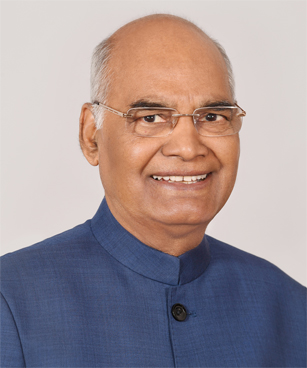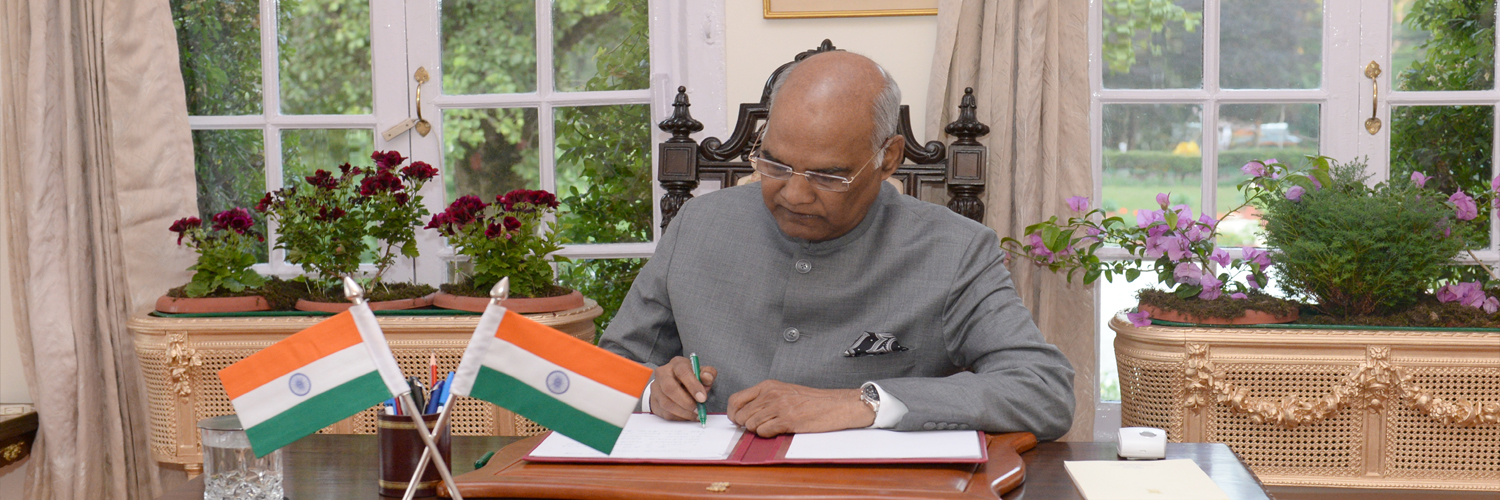

ADDRESS BY THE PRESIDENT OF INDIA, SHRI RAM NATH KOVIND AT THE ANNUAL CONVOCATION OF VISVA BHARATI
Santiniketan : 11.11.2019

1. At the outset, I express my deepest condolences for loss of life caused by Cyclone Bulbul. My thoughts and prayers are with those affected.
2. It is indeed my privilege to be here at Santiniketan. This is one of those blessed sites that re-imagined our civilizational values that define India. This is the place that infused new energy in our national life. Thus, I come here not only as the Visitor or Paridarsaka, but equally as a humble pilgrim and a seeker for the answers to our eternal quest for wisdom. I bow to the founder of this great seat of experiments in learning and living.
3. I call this as pilgrimage because the two greatest visionaries of modern India, Rabindranath Tagore and Mahatma Gandhi, frequently met here. In this year of Mahatma Gandhi’s 150th birth anniversary, let us recall their unique bonding that shaped the history of modern Indian life and thought. It is here that we all pick the threads of life and lessons of these great sages and learn from them.
4. When Gandhiji returned from South Africa to India in 1915, as you all know, Gurudev had invited him and his extended family to Santiniketan, following a word from their mutual friend, ‘Dinbandhu’ C. F. Andrews. Both Gurudev and Mahatma wanted to craft a philosophy of life. This was to be a collective effort, and not an individual quest. Both found the ideal template in the ashrams of ancient India. Tagore modelled Santiniketan on this "endeavour of the forest-dwelling sages of ancient India”. His ‘Brahmacharya ashram’, the ashram school that he established in Santiniketan, as well as Visva-Bharati, the university which later blossomed here, were both founded upon the ancient Indian model of the tapovana or hermitage. Gandhiji took inspiration also from the likes of Ruskin and Tolstoy, and founded the Phoenix Farm in South Africa, the first of several ashrams. The ashramites of these two traditions coming together must have been a unique occasion! In the few days of intermingling, there was much learning together for the youngsters from the Phoenix Farm and Santiniketan.
Ladies and Gentlemen,
5. When the two titans met later, Gurudev addressed Gandhiji as ‘Mahatma’. The epithet was not new, but it gained currency after it received the mark of Tagore’s approval. The two great minds, united by their deep concern for the nation, its rich heritage and its contemporary poverty, struck instant rapport. Being original thinkers, they disagreed on countless issues – the ideas of India, the varieties of nationalisms, the methods of politics and so on. In their frequent debates, however, they were not only civil to each other, but full of heartfelt admiration for each other. That is why, these debates generated not heat but light, illuminating the facets of our national existence.
6. The Gandhi-Tagore relationship is a glorious chapter in the history of modern India. I think of how Tagore visited the Sabarmati Ashram in January 1930 to discuss with Gandhiji the future of the freedom struggle. A couple of months later, Mahatma was to infuse new life in the spirit of the nation with the great Salt March. I think of how Tagore rushed to the Yeravda prison during Gandhiji’s ‘Epic Fast’ in 1932, and how elated Gandhiji was, breaking fast in Gurudev’s presence, embracing him affectionately.
Ladies and Gentlemen,
7. When this great institution of Santiniketan was in dire need of funds in 1935, who else would Gurudev turn to but Gandhiji? Mahatma promised "straining every nerve to find the required money”, and managed to send him a draft of Rs 60,000.
8. It was in this catchment that Gandhiji fished for like-minded youngsters devoted to the national cause. It was here, during the first visit itself, that he found lifelong colleagues like ‘Kakasaheb’ Kalelkar and ‘Acharya’ Kripalani. Not surprisingly, when Gandhiji founded a national university in Ahmedabad, the Gujarat Vidyapeeth, the two persons he most relied upon were originally Santiniketan dwellers, Kakasaheb and Kripalaniji.
Dear students,
9. For Gurudev, as well as for Mahatma, right education was the key to national regeneration. To this end, Tagore thought of an alternative educational model that thrived on an intimate communion with nature. Tagore was too great to be inhibited by man made barriers of gender, caste, community or race. Open air for open minds. He wanted to remove walls, literally and metaphorically, when the world was raising walls.
10. Visva-Bharati is the realisation of Gurudev’s vision of India in dialogue with the world. He developed it as a place for "incubation of ideas”. The place welcomed cultural influences from across the world while remaining grounded in the Indian ethos. This justifies the motto of the university, ‘Yatra Visvam Bhavatyekanidam’ that is, "Where the world makes its home in a single nest”.
11. This uniqueness of Visva-Bharati is something that we need to prize and hold up with pride before the entire world. It was in this place that Tagore lived, worked and gave concrete shape to his dreams. The community here – students, academics, staff and ashramites – are all proud inheritors of that rich legacy which your founder has left you. Its illustrious alumni covering a diverse range of personalities from Indira Gandhi and Satyajit Ray to Amartya Sen have not only fulfilled its founder’s vision to a great extent, but also contributed in taking independent India to new heights in various walks of life.
Ladies and Gentlemen,
12. When it was founded, Visva-Bharati was like an oasis in the vast desert of pedagogies that, more often than not, saw learners as robots to be programmed. In this oasis, Tagore had taught us to live in a manner that would fulfil the inner urges of the human self. For this purpose, he felt it necessary not only to train the minds of the students through disciplines like philosophy, literature or history, but also to engage their souls with music and painting and fine arts. Given the pragmatic needs, there was space for agricultural studies too. This is why alongside Santiniketan, the Abode of Peace, he gave so much importance to rural reconstruction and village welfare at Sriniketan, the Abode of Prosperity.
13. In an age which defined machine and wealth as benchmark of progress for societies, Visva-Bharati emerged as a unique blend of tradition and modernity. Progress and technological advancement are welcome for the development of human living. Tagore was not averse to technology. He was a practising artist, and his world view evolved continuously. But the welfare of humanity was always uppermost in his mind. The problem arises when such concerns for human well-being are relegated to the background, and when the machine is allowed to gain predominance.
14. So, while changes for the good of humanity are always welcome, caution has to be exercised in weeding out mindless measures that may threaten to swamp that basic concern in the name of progress. The devouring sands of the deserts have to be pushed back firmly, and the greenness of the oasis preserved with tender care. In this respect, taking cue from Tagore’s ideals of education which aimed at a holistic approach to the development of the human self, Visva-Bharati, as a seat of learning, can define clearly the aims it has set itself – both for the present and in the future.
Dear students, Ladies and Gentlemen,
15. On the eve of the centenary of its foundation, let us all pledge to strive towards Visva-Bharati’s glorious future in accordance with Gurudev’s vision. While paying last tributes to Gurudev, Mahatma had said: "May those in charge at Santiniketan prove worthy of the responsibility resting on their shoulders.” You have done well so far, and I wish you the best in living up to the expectations in the years to come.
16. To the students who receive their degrees today, I extend my heartiest congratulations and best wishes. I would urge you to remember this great institution which has nourished you through all these years as a foster-mother. Visva-Bharati has made you aware of your potential, and made you sensitive to your role in the society.
17. As for the life ahead, instead of offering any advice to the students of Santiniketan, I would prefer to let India’s first Nobel
laureate Gurudev Rabindranath Tagore’s words guide you and be your talisman: